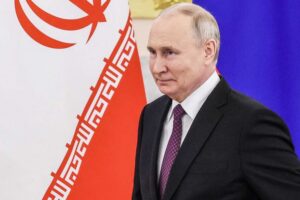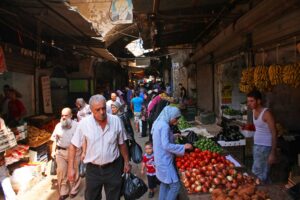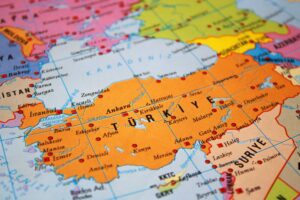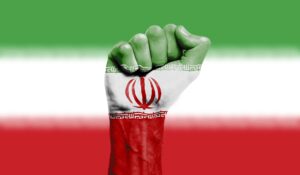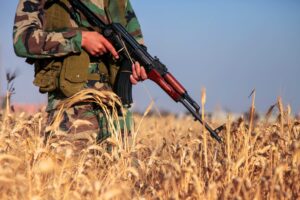On 18 March 2016, President of the European Council Donald Tusk, President of the European Commission Jean-Claude Juncker, and the Turkish Prime Minister, Ahmet Davutoglu, announced a novel EU-Turkey deal to tackle the Syrian refugee crisis. Through this agreement, the EU outsourced the responsibility of managing Europe-bound migration waves to Turkey and, in exchange, promised to help Turkey in its accession to the Union. However, the deal also created the illusion among European politicians that Syrian refugees were no longer a policy priority for the EU.
The strategy that is limited to restricting migrant mobility fails to consider the medium to long-term effects of Syrian refugees’ presence in Turkey for both the host country and the EU.
Fast forward to today, the EU has created an asymmetrical power relationship with Turkey, although the latter’s accession to the Union remains unfulfilled. However, the strategy that is limited to restricting migrant mobility fails to consider the medium to long-term effects of Syrian refugees’ presence in Turkey for both the host country and the EU. Unless Syrians find refuge in Turkey with sufficient means to lead a decent life, their situation will create important externalities. As of 2022, with the depreciation of the Turkish economy, early signs of hostility are increasingly apparent: anti-refugee sentiment has already found itself a place in the corridors of the Turkish Parliament as well as among some 85% of voters, who would prefer to see the repatriation of Syrian citizens. It is imperative for the EU, its individual member states, and Turkey to monitor Syrians’ socio-economic conditions in Turkish cities and take proactive steps by producing policies that preserve opportunities for Syrian refugees.
Introduced by Amartya Sen and Martha Nussbaum, the term “human development” provides significant analytical insight into understanding how Syrians can lead a decent life in Turkey.[i] Human development is traditionally measured by the United Nations Development Programme with three categories: life expectancy, education, and per capita income. Therefore, Syrians’ access to quality healthcare, the schooling rate among Syrian children, and refugees’ access to the labor market should all be examined to analyze their condition in Turkey from a human development perspective.
Syrian Refugees’ Access to Healthcare in Turkey: Current Approach and Challenges
As of 2022, approximately 3.8 million Syrian refugees are registered under temporary protection in Turkey.[ii] Due to high birth rates in their community, the number increases exponentially.[iii] Because of the vast influx of Syrians to Turkey, the temporary protection regulation (TPR) designated some of the social services outside refugee camps to ease overload of camps[iv]. However, to protect the social infrastructure, the TPR requires Syrians to register in a particular province and stay there as a proviso to be eligible for accessing social services, including healthcare[v]. Making an appointment to access healthcare is mandatory, and Syrians can do this by either submitting their request in person or through online platforms[vi]. While an outsized proportion of Syrians do not have access to the internet, the pandemic restricted most in-person opportunities, creating grave accessibility challenges.[vii] Moreover, approximately one hundred thousand Syrians are not registered under the TPR at all and do not receive any coverage in health-related services, including but not limited to physiotherapy and psychological counseling.[viii] Additionally, the insufficient number of Arabic-Turkish translators in hospitals poses a difficulty in communicating their problems, rendering complementary and alternative medicine (CAM) the most viable option available to Syrians[ix]. On the other hand, healthcare professionals are obliged to report people who left their registered district, which compromises the ethical code of providing equitable and impartial treatment to patients.[x]
A large number of healthcare workers—particularly doctors—emigrate to European countries due to burnout and low salaries in Turkey.
In addition to underlying structural problems, the pandemic dealt significant damage to Syrians’ access to healthcare. Like most countries, Turkey restricted access to non-Covid-19-related issues, while the responsibility of combating the pandemic as a primary priority and the protracted timescale of the pandemic overwhelmed most professionals. A large number of healthcare workers—particularly doctors—emigrate to European countries due to burnout and low salaries in Turkey, which decreases the quality of the services the healthcare system can provide as a whole. Doctors can now allocate a mere five minutes to a single patient as the Ministry of Health announced.[xi] Syrians under the TPR—and those who are not granted the status—face a multi-faceted problem in accessing quality healthcare.
Syrians’ Difficulties in Access to Education
47% of Syrians registered under the TPR are children.[xii] A significant indicator that assesses children’s well-being is child poverty, and among OECD countries, Turkey ranks second on the highest levels of child poverty, which Syrian children arguably experience to even higher degrees.[xiii] Taking such factors into consideration, specific attention needs to be paid to education policies by Turkey and the EU to bolster the resilience of the Syrian refugee community in the long term.
Public education is free in Turkey and Syrian children under the TPR scheme can enroll in schools after taking an assessment test that determines their level of educational. Turkey also took additional, more essential steps to provide quality education to Syrian children. In order to meet the demand from Syrian children and increase their enrollment rate, the Ministry of National Education enhanced the education infrastructure in partnership with the World Bank and the EU.[xiv] The Ministry of National Education also designed an alternative curriculum for Syrian children, which aimed to minimize communication problems by increasing students’ exposure to Turkish, employing Syrian and/or Arabic speakers as teachers, and conducting pedagogic workshops for educators in general in order to increase their awareness of the specific needs of the refugee community.[xv]
Approximately 400,000 Syrian children are out of school.
Despite such commendable initiatives, there are significant problems with Syrian children’s schooling in Turkey. First of all, the number of teachers is not sufficient, and according to a report released by UNESCO, there is a deficit of approximately 80,000 teachers in Turkey. In some classrooms, especially in densely populated areas, there might be 45-50 students, significantly lowering the overall quality of education. This is demonstrated by national high school entrance exams as well, in which students from affected schools perform especially weakly.[xvi] The schooling rate among Syrian children also poses a great challenge to Turkey. According to a comprehensive report published by UNICEF in 2019, approximately 400,000 Syrian children are out of school. One of the reasons behind this is intrinsically related to Syrians’ occupations in the informal labor market. Legal and social obstacles force Syrians to find jobs in agriculture in the Mediterranean and the southeastern regions as seasonal workers. Another reason behind the high drop-out rate is bullying by peers and being subject to discrimination by teachers. In addition to these problems, Syrian children are not offered additional Turkish classes and continue to struggle in understanding lectures in comparison to the few whose parents speak some Turkish.[xvii] Recently with the pandemic, education shifted to remote learning, which has disproportionately affected children without the necessary technological tools a private bedroom that would allow them to focus on their schoolwork. According to a study published in 2021, almost half of Syrian refugee girls experienced hardship in finding a suitable study environment. At the level of higher education, only 33,000 Syrian students are enrolled, while the remaining number (approximately 600,000) benefit from vocational training and are looking for employment in blue-collar sectors. Educational attainment among Syrians remains a multi-faceted problem across various age groups.
Syrians and the Labor Market
Approximately two-thirds of the 3.8 million Syrians living in Turkey are of working age. Although knowing the exact number is necessary to tailor effective policies, the legal obstacles before Syrians entering the formal labor market make it difficult for officials to know who is actively in the market.[xviii] Among these workers, according to comprehensive surveys conducted by the Directorate General of Migration Management, the UNHCR, the International Organization for Migration, and the International Labour Organization, Syrians are predominantly working in the textile, agricultural, and construction sectors without any social security net behind them. As a direct outcome, they receive lower than minimum wages, and the informal and irregular nature of these jobs leave them in a precarious situation, even vulnerable to exploitation.[xix]
Turkey does not officially recognize Syrians as refugees under international refugee law, their rights are much narrower.
There are multiple factors that force Syrians to find jobs in the informal labor market. To begin with, since Turkey does not officially recognize Syrians as refugees under international refugee law, their rights are much narrower under the TPR, limiting their chances of receiving work permits, which are in turn required for securing a job in the formal labor market.[xx] As work permits require a significant amount of time and money to secure, Syrians often shy away from investing even engaging in the process. In addition to this, a cash-based assistance program, which is provided to Syrian families insofar as all family members are unemployed, decreases incentive in seeking out jobs in the formal labor market as opposed to taking jobs informally.[xxi] Language barriers between Turkish host communities and Syrians also create challenges in finding employment. Even those who had received higher education diplomas in Syria find themselves in a precarious position as their qualifications are not accredited in Turkey. Employers often discriminate against Syrian workers, granting them a lot less in salaries as compared to their Turkish colleagues with similar credentials.
Although EU-funded projects aim to increase the number of Syrians in the formal labor market, there are social obstacles behind the legal impediments, and these obstacles have become much more stringent with Turkey’s current economic atmosphere. Recent regulations regarding salaries, contraction in virtually all sectors and sky-rocketing energy prices in Turkey make it difficult for employers to take more people—at least through legal processes. In other words, a significant proportion of employers try to evade tax responsibilities and continue employing workers informally. This presents a coalition of interests especially in the case of the already vulnerable Syrian community.
Conclusion
In 2016, when the EU-Turkey Action Plan was signed, Turkey was a different country. The wheels of the economy were turning, the parliament exercised executive constraints over political agendas, and Turkey’s foreign affairs with most of its neighbors were cordial. As we pass the sixth anniversary of the famous deal, Turkey looks very different: the presidential executive system leaves no room for the Grand National Assembly to represent minority voices, the economy is struggling—experiencing one of the highest inflation rates in the history of the republic. The coup attempt on 15 July 2016 has re-shaped domestic political processes, while Turkey has become more isolated in its foreign affairs too. Recognizing that what was once an example of a modern democracy in the Middle East has become a case of populist rule, which has deeply concerned the European Union. As a result, the main focus of EU countries has shifted to the future of Turkish democracy, pushing the refugee agenda farther down the line.
Syrians’ mobility is significantly restricted, and while Turkey provides a shelter to them, they are trapped in a system with significant caveats, unable to guarantee a viable future. Unless the EU takes action and prioritises sharing a responsibility with Turkey in the matter, the Union may yet witness another wave of refugees testing their collective reactive capabilities.
A viable policy path for both the EU and Turkey would be to create a proactive and harmonized strategy.
In order to provide quality access to healthcare for Syrians in Turkey, an emphasis should be placed on simplifying the evaluation of the TPR status. Since most people wait for months to be registered under the TPR, their access to healthcare, even at the minimum level, remains significantly limited. Also, lifting the regional limitations of access to healthcare would prevent the overload of the healthcare infrastructure. Recruiting Arabic-speaking translators in hospitals is a similarly important point, which could be attained by ways of support from a joint EU-Turkey fund. The Turkish healthcare system currently lacks sufficient human resources, especially skilled workers. Employing Syrian professionals in healthcare would increase the overall level of access while also facilitating the integration process.
The education system would also benefit from such a language-training and interpreting scheme as Turkish remains a barrier in front of most Syrian children while teachers lack the sufficient pedagogical skills to cater to them.
On another note, although lifting legal limitations to change Syrians’ status to refugees would be the most optimal policy, creating pathways to long-term residency and a route to citizenship in the longer term could also work. Naturally, any such plan would have to be linked to curbing anti-refugee sentiments in Turkey, which in themselves are related to the broader economic health of the country. Such ambitious policies would greatly depend on support from the international community too.
Fundamental related to all of the above challenges, one of the most pressing issues for Syrians is financial autonomy as, under the TPR, their access to the labor market is significantly restricted. Funded by the EU, incentives should be given to employers to hire Syrians through formal labor, and it can be done by wage subsidies. Another effective tool would be encouraging entrepreneurship among Syrians to establish their own businesses, and the EU and Turkey can cooperate with the European Bank for Reconstruction and Development as well as World Bank to prepare such a policy program. Gaining economic independence plays the utmost importance in integrating Syrians into society.
The European Union’s approach to managing the Syrian humanitarian crisis through its strategic partnership with Turkey is far from concluded. While initial policies mitigated the most immediate migratory pressure on Europe, an update to and bolstering of the scheme would be needed to prevent new externalities from arising, as well as providing viable and promising paths for Syrians for building their own future.
[i] Although the unit of analysis should encompass all groups and communities within a country, it is helpful to clarify Syrians’ condition in Turkey.
[ii] Turkey is a party to the Geneva Convention on the Status of Refugees; however, it is not a party to the 1967 Protocol on the Legal Status of Refugees, which aimed to lift the geographical limitations of the 1951 Convention. Therefore, only an asylum-seekers from European countries can enjoy refugee status in Turkey. In order to solve this puzzle, Turkey created “temporary protection” framework to regulate Syrians’ rights and obligations.
[iii] World Health Organization. Health emergency response to the crisis in the Syrian Arab Republic: annual report 2018. No. WHO/EURO: 2019-3610-43369-60839. World Health Organization. Regional Office for Europe, 2019.
[iv] Ibid.
[v] Cantekin, Duygu. “Syrian refugees living on the edge: policy and practice implications for mental health and psychosocial well-being.” International Migration 57, no. 2 (2019): 200-220.
[vi] Alawa, Jude, Parmida Zarei, and Kaveh Khoshnood. “Evaluating the provision of health services and barriers to treatment for chronic diseases among Syrian refugees in Turkey: a review of literature and stakeholder interviews.” International journal of environmental research and public health 16, no. 15 (2019): 2660.
[vii] Ibid.
[viii] Cloeters, Gabriele, and Souad Osseiran. “Healthcare access for Syrian refugees in Istanbul: A gender-sensitive perspective workshop report.” (2019).
[ix] Abohalaka, R., & Yesil, S.T. (2021). Determination of perceived language barriers according to Syrian refugees visiting two hospitals in Ankara. Turkish Journal of Public Health, 19(2), 92-105.
[x] Mardin, Deniz. “Right to Health and Access to Health Services for Syrian Refugees in Turkey MiReKoc Policy Brief Series.” MiReKoc: Istanbul, Turkey (2017).
[xi] Sezer, Murad. Turkey’s Medical Workers Protest Low Wages, Harsh Conditions. December 15, 2021. https://www.reuters.com/world/middle-east/turkeys-medical-workers-protest-low-wages-harsh-conditions-2021-12-15/.
[xii] Uyan-Semerci, Pınar, and Emre Erdoğan. 2018. “Who Cannot Access Education? Difficulties Of Being A Student For Children From Syria In Turkey”. Vulnerable Children And Youth Studies 13 (1): 30-45. doi:10.1080/17450128.2017.1372654.
[xiii] Thévenon, O., et al. (2018), “Child poverty in the OECD: Trends, determinants and policies to tackle it”, OECD Social, Employment and Migration Working Papers, No. 218, OECD Publishing, Paris, https://doi.org/10.1787/c69de229-en
[xiv] Project details are available at https://www.avrupa.info.tr/en/project/education-infrastructure-resilience-activities-turkey-7502.
[xv] Aydin, Hasan, and Yeliz Kaya. “Education for Syrian Refugees: The New Global Issue Facing Teachers and Principals in Turkey.” Educational Studies 55, no. 1 (2019): 46–71. https://doi.org/10.1080/00131946.2018.1561454.
[xvi] Çelik & İçduygu, 2018.
[xvii] Uyan-Semerci and Erdoğan, 2018.
[xviii] The range is between 750,000 and 1,500,000 people.
[xix] Caro, L. P. (2020). Syrian refugees in the Turkish labour market. ILO Office Turkey.
[xx] Del Carpio, X. V., Seker, S. D., & Yener, A. L. (2018). Integrating refugees into the Turkish labour market. Forced Migration Review. www. worldbank. org/en/news/opinion/2018/06/26/integrating-refugees-into-the-turkish-labor-market (accessed 1 August 2018).
[xxi] Kirişci, Kemal, and Gökçe Uysal. “Syrian Refugees in Turkey Need Better Access to Formal Jobs.” Brookings. Brookings, March 9, 2022. https://www.brookings.edu/blog/order-from-chaos/2019/07/18/syrian-refugees-in-turkey-need-better-access-to-formal-jobs/.
Alawa, Jude, Parmida Zarei, and Kaveh Khoshnood. “Evaluating the provision of health services and barriers to treatment for chronic diseases among Syrian refugees in Turkey: a review of literature and stakeholder interviews.” International journal of environmental research and public health 16, no. 15 (2019): 2660.
Rep. Turkey Humanitarian Situation Report. UNICEF, 2019.
https://www.unicef.org/turkey/media/7091/file/UNICEF%20Turkey%20Humanitarian%20Situation%20Report%20-%20Jan-March%202019.pdf.








